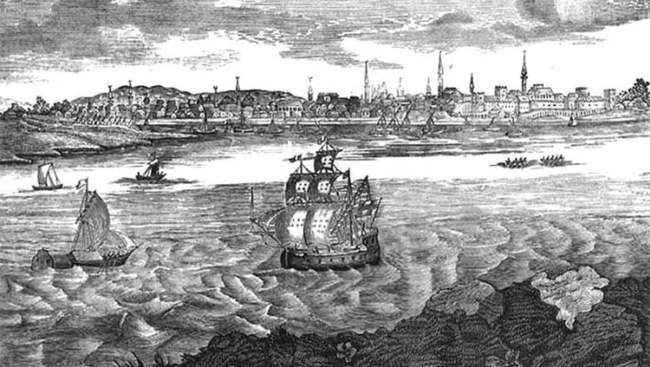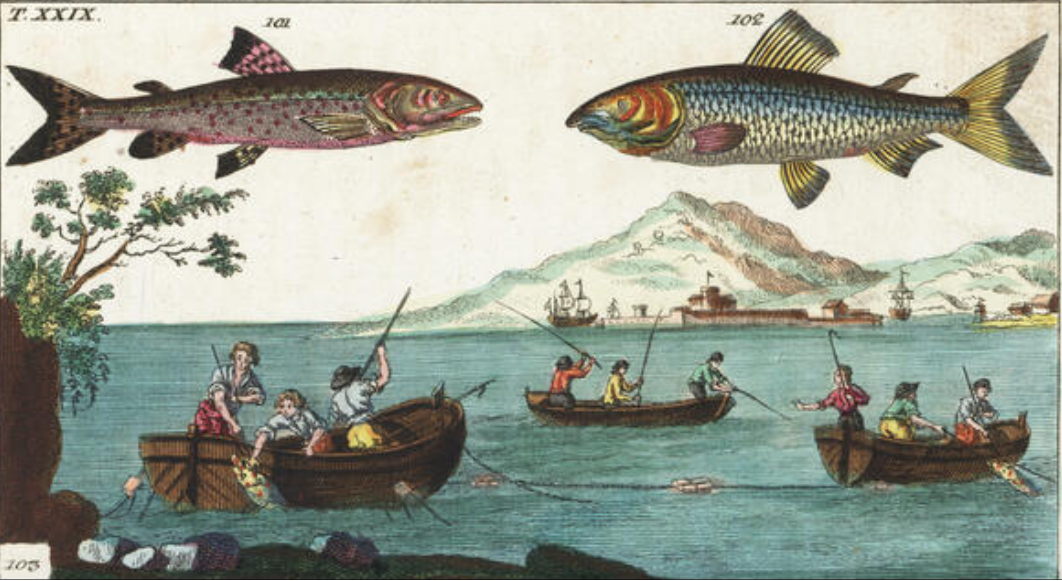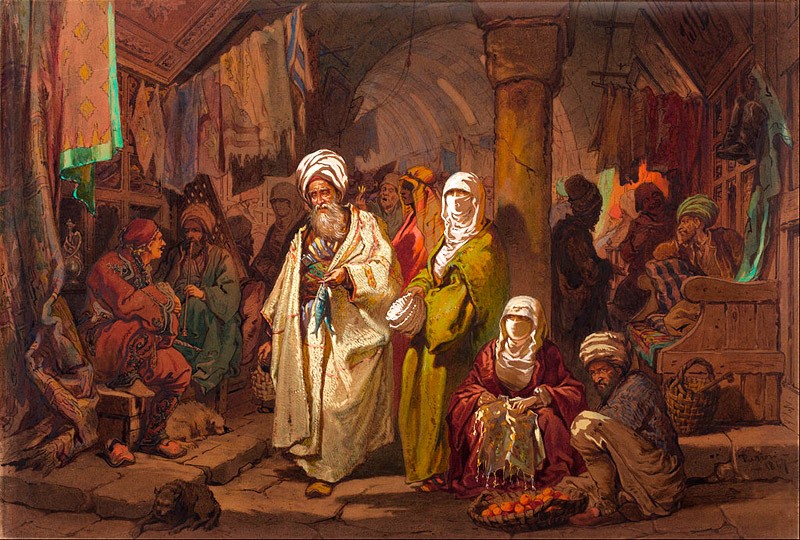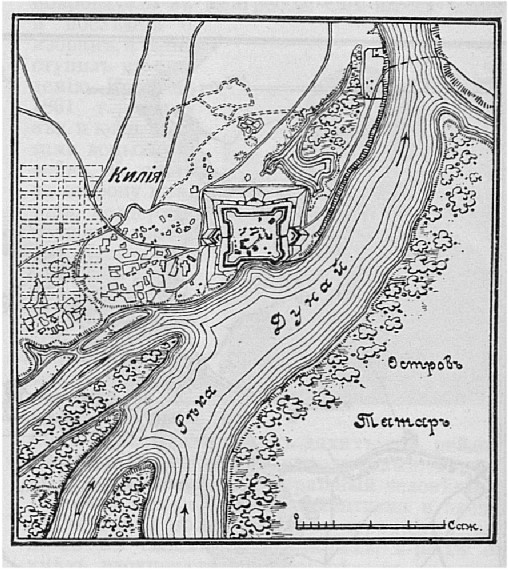Меню
Social networks
Sections
March 1, 2025, 11:16 p.m.
Kilia's Trade Boom: 60,025 Akçe Profit in 1536 Amid Ottoman Prosperity
Цей матеріал також доступний українською601

Fortress of Kilia, 17th century. Image by shukach.com
The problem of studying the Ottoman cities of Bujak is the lack of surviving monuments due to wars and riots. Archaeologists have paid much attention to the fortifications of the cities and the remains of fortifications, while economic life has been neglected. Perhaps this is due to the modern urban development. After talking about trade in Budzak in the Middle Ages, let's focus on Kilia.
In the sixteenth and eighteenth centuries, Kilia was an important center of transit Balkan and Black Sea trade, with its own wharf and customs. Wine from Crete, Greece, and Trapezunda was transited to Kilia and resold to merchants from Muscovy and Poland. In 1768, the German traveler Nikolaus Kleeman praised the navigational advantages of the river near Kilia. According to him, the city is "conveniently located for navigation". Even "three-masted ships" had access to it. It is not surprising that in 1536 Kilia received 60,025 akçe of annual profit and that year was second only to the ports of Silistra and Varna in the Silistrian Sanjak to which the city belonged.
Akçe is a small silver coin of the Ottoman state of the fourteenth and nineteenth centuries. In 1481-1687, the weight of the akçe ranged from 0.737 to 0.19 grams of 900 silver. In 1585, the value of the akçe decreased significantly: 1 dirham cost not 450 but 800 akçe.
The growth of Kiliya's trade was facilitated by the construction of the Oglak Geçidi customs post (mentioned since 1484 as Hora Tepe) near the Tulca customs post, which controlled the flow of goods along the Crimean Black Sea route, one of the three official routes of Rumelia and one of the seven state routes of the Porta. Dobruja's trade with Moldova, Bujak, and the Ottoman state was carried out through Tulcea. The customs registry for 1515-1517 reported taxes of gumruk (customs duty) and resm-i gedici (ferry fee), including slaves and cattle.
Interestingly, the taxes were collected in favor of the Akkerman fortress. Thus, Tulcha was an economic component of the Akkerman trade, through which goods were exported from Kilia.
At the beginning of the 16th century, Kiliya's exports were mainly specialized in the sale of slaves and cattle. According to customs reports, the export of 2893 slaves in 1516-1517 brought 2893 akçe taxes to the customs.
Most slaves were brought from Moldova and Podolia. However, residents of Dobruja and Budzak often resorted to selling their own children and women in lean years, believing that this way they were saving them from starvation. Therefore, the scale of the slave trade depended not only on military campaigns but also on the local climate and harvests. As Eulia Celebirecalled: "A healthy slave here (in Kiliya - ed.) could be bought for 20-30 kurush."
The kurush (gurush), or Crimean piastre, is a small silver coin that in the seventeenth and eighteenth centuries amounted to 120-125 akçe.
Customs duties for the transportation of livestock (4 akche for a horse or cow, 3 akche for an ox, 2 akche for a sheep) made it possible to calculate the scale of its export. In 1515, 10 cows, 2 oxen, 127 horses, 506 sheep, and 1 calf were transported through customs. The export of grain and fish was subject to a duty of 8 akche from a cart with 4 oxen and 4 akche from a cart with 2 oxen. Taking into account the duties paid, the export of grain in the winter-spring of 1515 was 500 tons.
The total customs duties for slaves and cattle amounted to 10084 akce in 1516 and 9649 akce in 1517. This accounted for more than half of all customs duties. The rest was made up of fish and grain sales.
The state of fishing near Kiliya was best described by Eulia Çelebi: "How many thousands of different fish are caught here! This is a huge profitable property, the products of which are salted and sent as payment to the soldiers of the fortresses of Ochakiv, Akkerman, Izmail, Braila, Isakcha, and Tulcea.
Up the Danube from the fortress of Kilia, logs are driven into the bottom of the Danube from one bank to the opposite bank, and poles are also driven in between. The Danube waters pass through them. A 20-pole-wide passage is left in the middle so as not to impede the movement of ships. These driven piles are wrapped with long vines of wild grapes and long poles with a sapling at the end, and these braided vines are lowered to the bottom. And when these vines begin to protrude to the surface of the Danube, a part of the river is fenced off like a pen. A fish as small as a heel cannot get out of it.
Then, on the inside of this ambush, in the very middle of the Danube, they drive in several hundred piles and build a temporary structure with a coffee shop and several rooms, and make windows at water level [in the floor]. Emin-aga and 300 of his assistants and fishermen, peering through the windows into the ambush, keep watch. Behind these driven piles and wicker grates, cages woven from wicker are placed at a depth equal to half a person's height.
When the fish seek to enter the sea in the Azov Sea and the Dniester Estuary in spring, they pass through this narrow gap with lightning speed. In this way, the fish are ambushed, and the fishermen pull out the cages with ropes. Then they begin to beat beluga whales of ten to fifteen arshins and sturgeons of five to eight arshins (an Ottoman arshin is 71 cm - ed.), and the surface of the Danube is stained with blood.
Some sturgeons are harvested with 5-6 canters of black caviar. Day and night, fishermen are on duty at the opening of this ambush and catch everything that falls in. Because once a fish enters the narrow passage, it cannot turn back.
The cantar depended on the country and was equal to 44-48 kilograms. In 1874, Turkish cantar became standardized and equaled 100 kilograms.
This is a great skill. Because if a ship passes through the Danube, the ropes of the aforementioned ambush are lowered. Then, when the ships pass in a hurry, the unfortunate fish, finding a hole in this place, rushes out and goes through it to the Black Sea and spawns there. But if the fish is going from the Black Sea to the Danube, it cannot enter, because although there is no ambush on the other side, the passage is blocked. And when a harsh winter suddenly begins, there are no fish for more than seven months. When winter comes, the fish farm and its temporary structures are removed, and all the construction material is dumped in heaps on both banks of the Danube. The emine-aga spends 100 purse strings on the maintenance of the fishery, but he makes a profit of 500 Egyptian purse strings, he pays the soldiers of the fortress, and after full payment to them, the emine is left with a profit of sometimes 150-200 purse strings, and sometimes this payment leads the emine-aga to losses."
An Egyptian wallet (misr kesesi) was equal to 600 kurush, or 48 thousand akçe.
Paul of Aleppo left his impression of the fish trade in Kiliya: "The Turks built 14 dams to catch sturgeon. Previously, from September to Christmas, 300 to 700 sturgeons were taken out of the water. Some of them weighed 120-200 okka and cost 1 silver thaler. We bought a fish weighing 80 okka and paid 4 thalers... The cargoes are transported by tombas boats 18 miles to the Black Sea, where 60-70 ships are waiting to load them with fish, wheat, and cattle."
It is not surprising that, according to a description of 1808, more than a third of all residents of Kilia were engaged in fishing.
The Danube towns developed a kind of "fish specialization" that was determined by the place where fish spawned. In particular, near Kilia and Vilkovo, they caught beluga, sturgeon, and catfish, and in lakes Yalpug, Katlabukh, and China, pike, crucian carp, and carp. This specialization indicates a well-established fishing industry.

Copper engraving by Jacob Nielson. Image: prints-online.com
To revive the Danube trade in 1802, the Ottomans built 2 lighthouses at the entrance to the Danube, one of which collapsed in the 1810s. The Turks built breakwaters and a bechivnyk (a road along the Sulinska estuary) to draw ships upstream (otherwise they had to wait for a tailwind for a very long time at every bend in the river). The Bechivnyk served sailors throughout the entire period of Russian rule at the mouth of the Danube and did not require repair. However, no significant consistent steps were taken by the Ottoman authorities.
The development of trade routes affected Kilia. Fairs were held here daily. There were 500 craft shops, 60 caravanserais, a bazaar, and a slave market. The city conducted active trade with Istanbul, Bursa, Hyrsova, Isakcea, Babadag, and other Danube and Anatolian cities of the empire. During the seventeenth and eighteenth centuries, as part of the New Moldavian Road, Chisinau connected Ottoman Dobrogea, Hungary, Poland, and Transylvania.

Painting by Amadeo Preziosi. Image by Wikipedia
On the outskirts of Kilia were the Timari, which were the main suppliers of grain. In 1570, the harvest amounted to 1,350 tons of wheat and 4,000 tons of legumes. In the vicinity of Akkerman, the harvest amounted to 5460 tons of wheat and 50 tons of legumes. Thus, the total grain harvest near these cities amounted to 6810 tons of wheat and 4050 tons of pulses.
Timar (Timar) - in the Ottoman Empire, a military feudal lordship, a landed property whose income was used by the lord, the sipahi, to go on a campaign.
Given the population of the time and the fact that the Tatars mostly consumed millet, there was a significant food surplus that was sold on the domestic and foreign markets.
Famous Timariots were Admiral Haji Ibrahim, who received the modern village of Prymorske (Kiliya district), and Admiral Omar Bey, who owned the Omarbiya estate. Famous agricultural estates included Kara-Mehmed (Shevchenkove village), Hasan Aspaga (Vyshneve village), and Galil Pasha (Desantne village).
These and other estates provided the towns with grain. The memoirs of Pavel Svinyin, a Russian official of the early nineteenth century, provide some evidence of the welfare of the Timars: "There were a few Turkish vineyards and orchards left on the islands near Cilicia, but local officials forbade the townspeople to tend them, fearing that the townspeople would flee to Turkey. These gardens soon dried up."
The growth of prosperity had an impact on the improvement of the city. Among the urban buildings of the late eighteenth century were several richly decorated mosques. A large gate from the fortress opened the way to the Tatar market. Sources reported 60 inns in Kiliya at that time. There were markets, a court, and coffee shops. A fish market was located near the customs office. According to the plan of the Russian officer F. Kauffer of 1793, the customs office was located on the shore, and there were taverns and government kitchens near the pier.

Image by Wikipedia
Despite the growth of prosperity, Kilia suffered from military operations. In 1538, the Moldovan ruler Stefan destroyed the city. In 1595 and 1602, the Cossacks visited Kiliya. In 1636, Kilia suffered from Tatar strife, and Crimean Tatars entered the city in search of the treasury of the Budzhak Khan Kantemir. In 1790 and 1806, Kilia was captured by the Russians, and the Ottoman population was taken prisoner. In 1808, there was not a single Muslim in the city. The share of Tatars in the villages on the outskirts did not exceed 10 percent. Thus, the Russo-Turkish wars caused serious damage to Kilia, which was partially repaired in the following decades of the nineteenth century.
Андрій Шевченко











